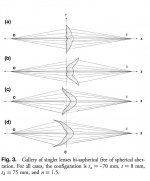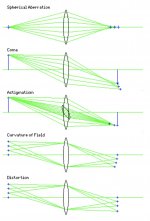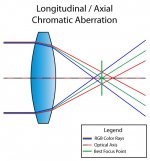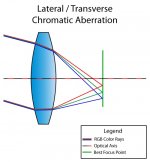Having done some additional Googling around:
1) The Featured Comment by GK Froehlich in Mike Johnston’s blog referred to in my previous post, puts the significance of the formula into a scientific context
The formula provides a ‘closed-form’ solution to eliminate lens aberrations i.e. plug in the numbers and get a precise result, instead of doing a series of 'best guess' approximations
- see especially the last paragraph
2) The intention of the formula
A) As stated in the abstract to the scientific article:
“. . . we present a rigorous analytical solution for the bi-aspheric singlet lens design problem.
The input of the general formula presented here is the first surface of the singlet lens; this surface must be continuous and such that the rays inside the lens do not cross each other.
The output is the correcting second surface of the singlet; the second surface is such that the singlet is free of spherical aberration.”
B) As stated somewhat differently by Rafael González-Acuña in an interview posted by PetaPixel:
“In this equation we describe how the shape of the second aspherical surface of the given lens should be given a first surface, which is provided by the user, as well as the object-image distance.
The second surface is such that it corrects all the aberration generated by the first surface, and the spherical aberration is eliminated.”
see:
https://petapixel.com/2019/07/05/goodbye-aberration-physicist-solves-2000-year-old-optical-problem/
However, I'm still unclear as to how the above can be put into practice - especially when one considers the examples of spherical aberration free lenses from the scientific article
e.g. How could such shapes be achieved in mass production? And how durable would they be in use (especially in binocular size or 35mm format camera size)? How would they be mounted?
AND as noted by Froehlich in 1) above: the solution supplied by the formula is likely to only apply to either a single wavelength of light, or at best a narrow wave band!
At this point, I’m reminded of the observation “In theory, there’s not much difference between theory and practice. However, in practice that’s often not the case.”
John











